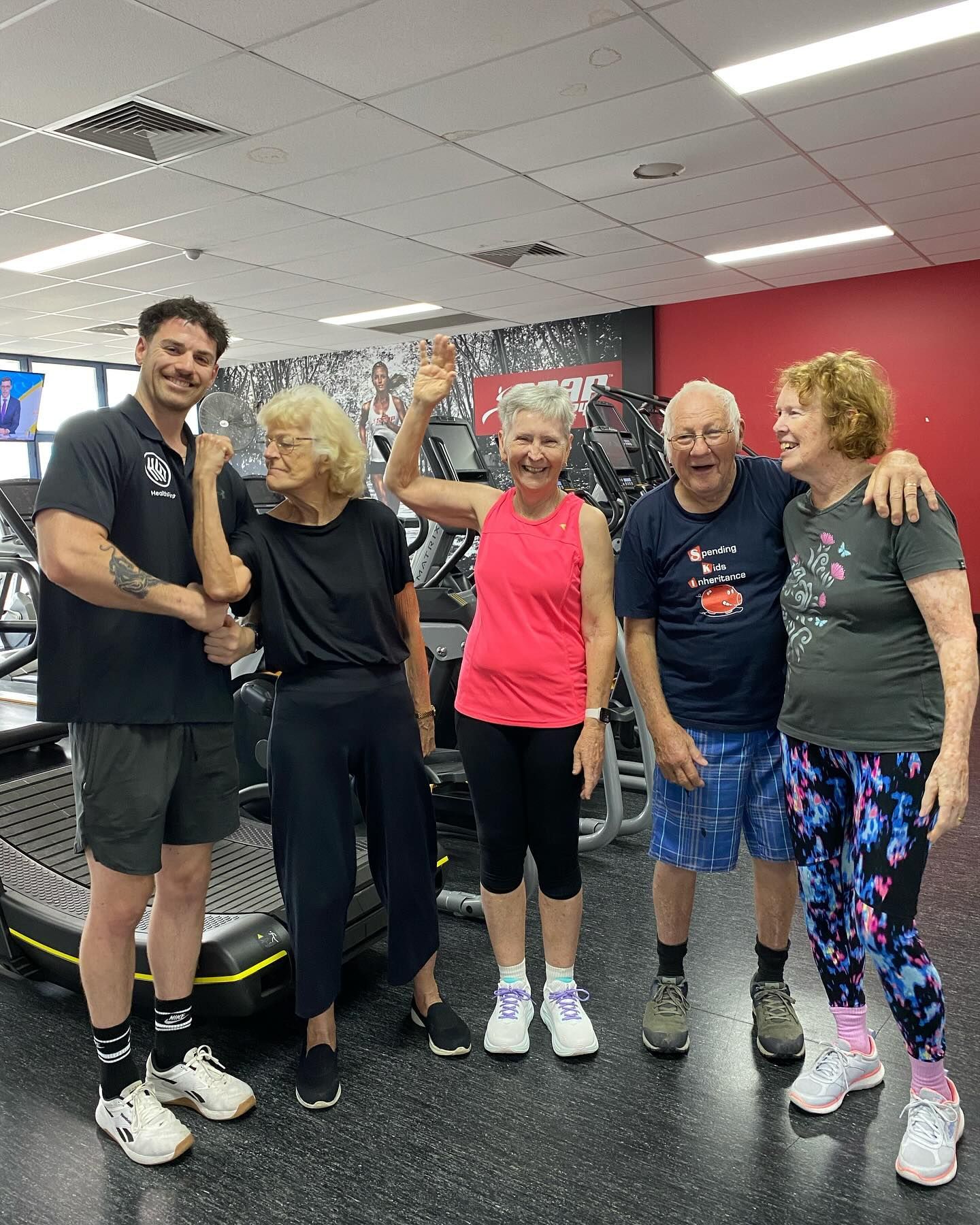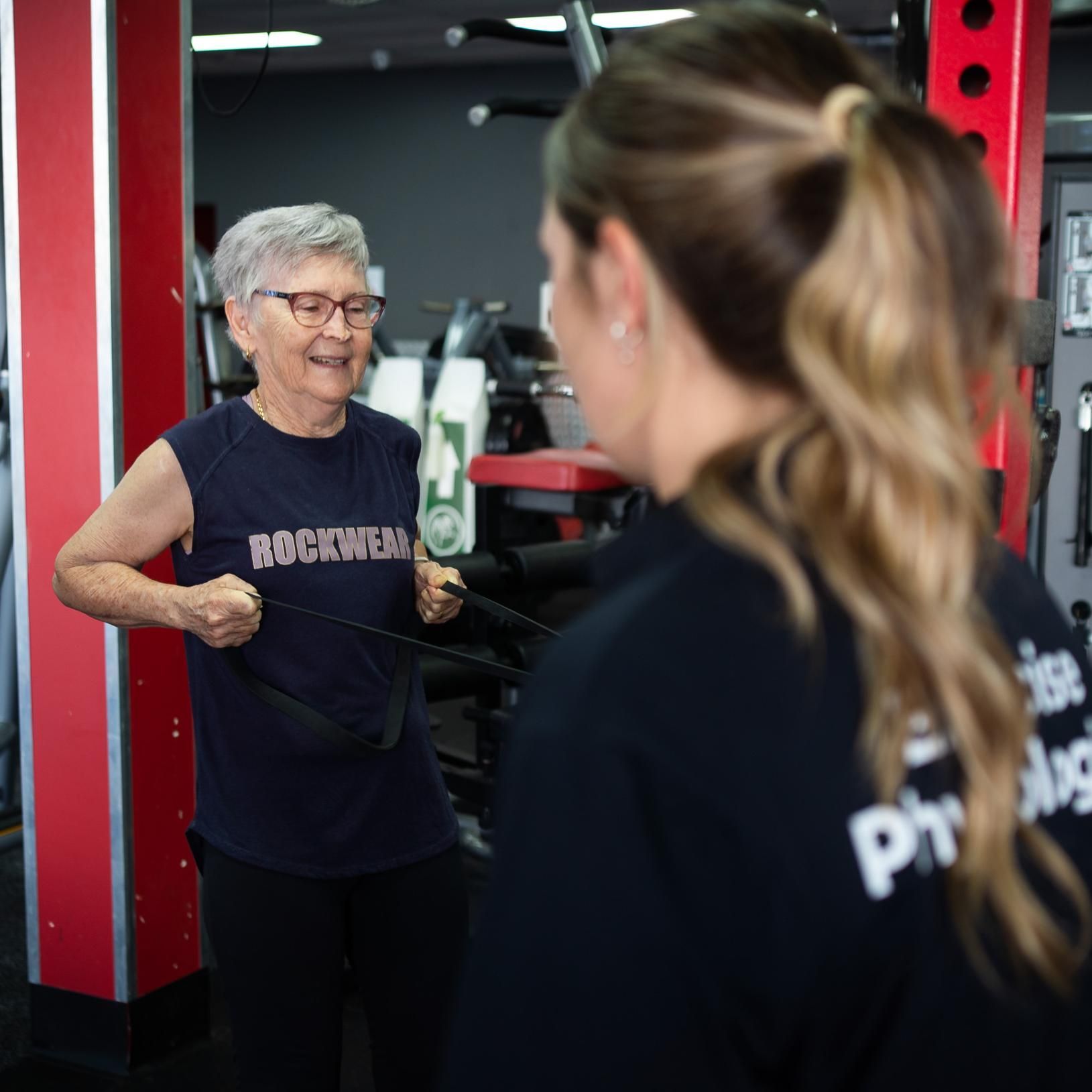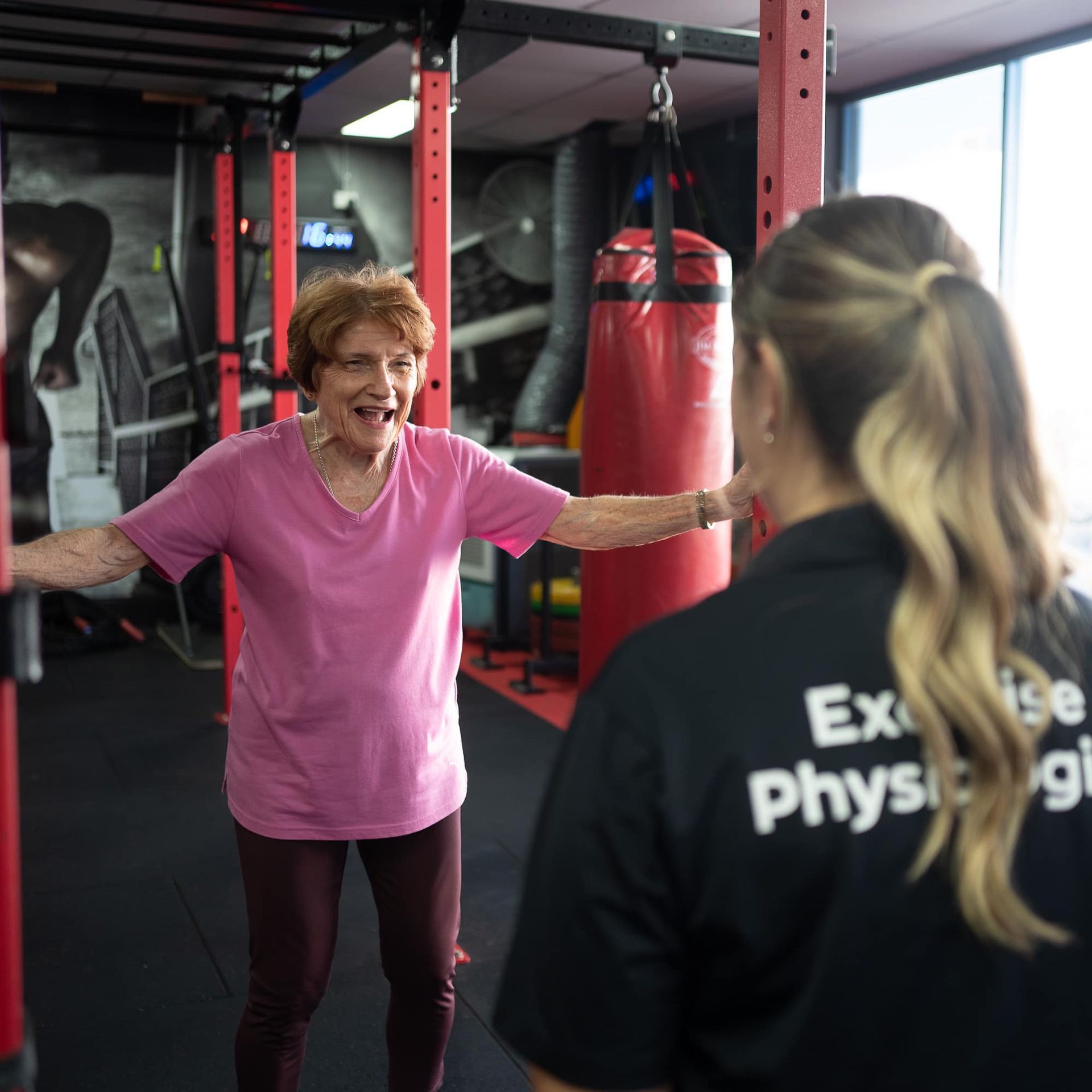Over 55s Fitness in Townsville
Stay Active & Healthy
At Health First NQ, we believe getting older shouldn't mean slowing down. Our Thrive After 55 program is designed to help you stay strong, mobile, and confident in your body — so you can keep doing the things you love for as long as possible. Whether you're managing a health condition, recovering from an injury, or just want to improve your fitness and independence, we're here to help.
Thuringowa, Aitkenvale & Townsville CBD Locations
Locally Owned & Operated
Comprehensive Health Services
Frequently Asked Questions
What types of exercise are best for people over 55?
A well-rounded fitness routine for over 55s should include a mix of cardiovascular, strength, flexibility and balance exercises. Walking, swimming and cycling are gentle yet effective cardio options. Strength training with light weights or resistance bands helps counter muscle loss, maintain bone density and improve metabolism. Stretching and mobility exercises, like yoga or Pilates, support joint health and flexibility. Balance exercises, such as tai chi or standing on one leg, reduce the risk of falls. The key is to choose activities that suit your fitness level and can be done consistently. Always consult your GP before starting a new program, especially if you have pre-existing health conditions.
How often should I exercise after age 55?
For most people over 55, aiming for at least 150 minutes of moderate aerobic activity per week—such as brisk walking—is ideal. That’s about 30 minutes on five days, and it can be broken into shorter 10–15 minute sessions. Include strength training at least two days a week, targeting major muscle groups. Flexibility and balance exercises should be done several times weekly, if not daily. Listen to your body and adjust based on energy levels and any chronic conditions. If you’re just starting out or returning after a break, ease in gradually. A personalised plan from a physiotherapist or exercise physiologist can also be a helpful guide.
Is it safe to start exercising later in life?
Yes, starting exercise later in life is not only safe but highly beneficial, even if you've been inactive for years. Regular physical activity improves heart health, mobility, muscle strength, bone density and mental wellbeing. It can also help manage conditions like arthritis, diabetes and high blood pressure. However, it’s important to start slowly and choose low-impact, joint-friendly activities to avoid injury. Before beginning, talk to your GP or a healthcare professional—especially if you have medical concerns. A gentle start with walking or chair-based exercises can build confidence. Over time, you can gradually include resistance, balance and flexibility work tailored to your capabilities. Consistency and patience are key.
Who It’s For:
Our program is ideal for:
- Adults aged 55 and over
- Anyone wanting to improve strength, balance, or mobility
- People managing chronic conditions such as arthritis, diabetes, or osteoporosis
- Those recovering from falls or wanting to prevent them
- Anyone looking to stay active and independent
What’s Included:
- Initial Assessment with our team of Exercise Physiologists and Physiotherapists
- Personalised Exercise Program tailored to your goals and ability
- Face to Face Sessions led by accredited professionals
- Ongoing Progress Tracking to ensure you’re improving
- Access to Our 24/7 Gym
Why It Works:
- Evidence-based exercise for better strength, balance, and joint health
- Individual support in a safe, welcoming environment
- Focus on building long-term independence, not just short-term fitness
- Optional collaboration with your GP, specialists or family members
- Medicare and private health rebates available for eligible clients
Benefits You Can Expect:
🌿 Improved strength and posture
🚶♂️ Better balance and reduced risk of falls
💓 Increased energy and confidence
🧠 Support for mental and emotional wellbeing
🤝 Community connection with others in your age group
Our Locations
Group Timetable
Mon
Tue
Wed
Thu
Fri
Seniors Timetable
Mon
Tue
Wed
Thu
Fri
















